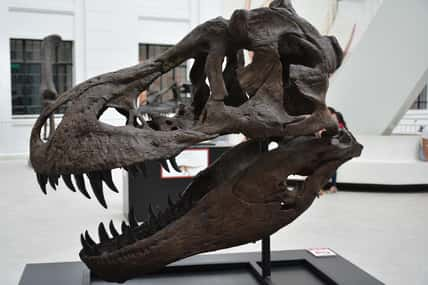An 80-Million-Year-Old Bird Skull Fossil Was Found In Brazil, And It’s One Of The Rarest Finds Of Its Kind

An 80-million-year-old fossil bird from the Mesozoic era was uncovered in Brazil by a team of researchers from the University of Cambridge and the Natural History Museum of Los Angeles County.
The fossil was exceptionally well-preserved and was named Navaornis hestiae. The bird was roughly the size of a starling and lived about 80 million years ago in what is now Brazil before the mass extinction event that wiped out all the non-avian dinosaurs.
The discovery could transform scientific understanding of the evolution of avian brains and intelligence between the 150-million-year-old Archaeopteryx, the earliest known bird-like dinosaur, and birds alive today.
The skull of Navaornis is nearly intact, making it one of the rarest and most significant finds of its kind.
Navaornis had a bigger cerebrum than Archaeopteryx, so its cognitive capabilities were likely more advanced, possibly giving it an edge when it came to finding food and shelter.
But most other areas of its brain were less developed, such as the cerebellum, which is in charge of sophisticated flight control in birds. This suggested that it did not yet have the complex flight control seen in today’s birds.
“The brain structure of Navaornis is almost exactly intermediate between Archaeopteryx and modern birds—it was one of those moments in which the missing piece fits absolutely perfectly,” said Dr. Guillermo Navalón from the Department of Earth Sciences at the University of Cambridge.
Navaornis is named after William Nava, the director of the Museu de Paleontologia de Marília in Sāo Paolo, Brazil. He discovered the fossil in 2016 at a site in the nearby Presidente Prudente.
The fossil’s excellent preservation is due to the environmental conditions of the site millions of years ago during the Late Cretaceous. It was likely a dry area that featured slow-moving creeks.

Sign up for Chip Chick’s newsletter and get stories like this delivered to your inbox.
The researchers were able to use advanced micro-CT scanning technology to digitally reconstruct the bird’s skull and brain with extraordinary detail.
“This fossil is so truly one-of-a-kind that I was awestruck from the moment I first saw it to the moment I finished assembling all the skull bones and the brain, which lets us fully appreciate the anatomy of this early bird,” Navalón said.
Before this discovery, almost nothing was known about the evolutionary transition between Archaeopteryx and modern birds.
But Navaornis represents nearly 70 million years of avian evolution, offering insights into what led to the emergence of modern birds.
Navaornis belonged to a group of primitive birds called enantiornithines, which became extinct at the end of the Cretaceous period.
They diverged from modern birds over 130 million years ago, but they had intricate feathers and were probably strong flyers.
That poses the question of how Navaornis could control its flight without the brain functions that living birds have.
In the future, the researchers hope to reveal how Navaornis interacted with its environment and with other members of its species to get a clearer picture of the evolution of bird cognition.
The research was published in the journal Nature.












